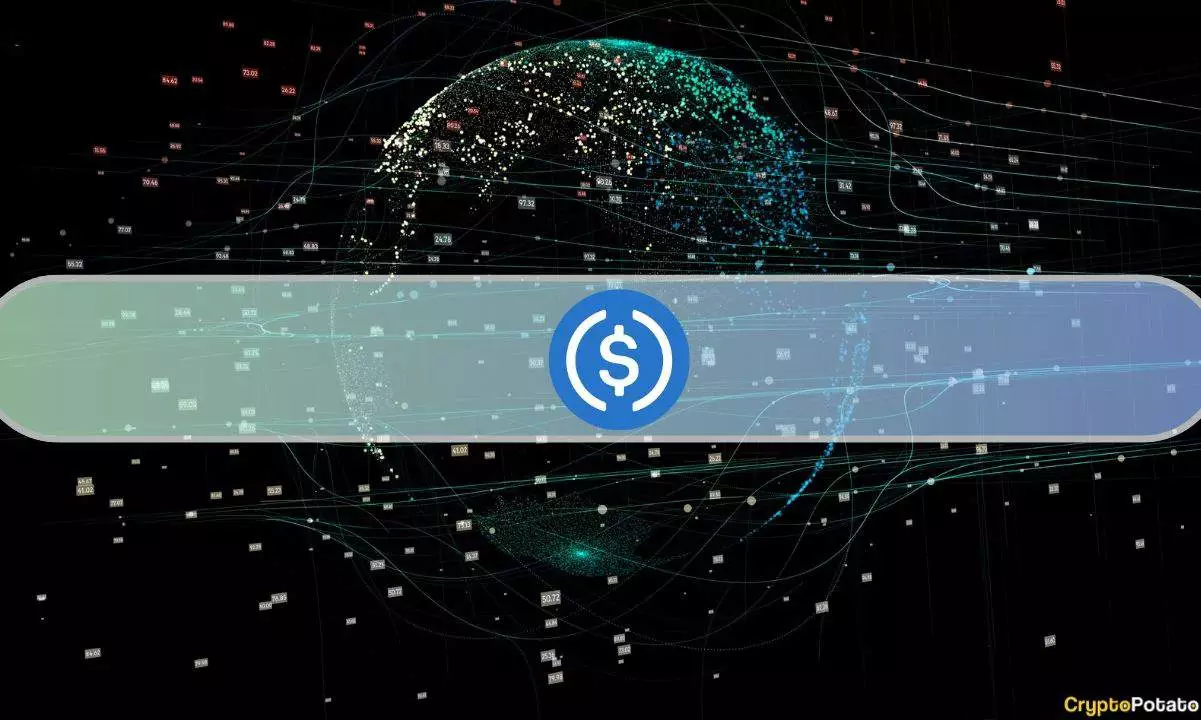The stablecoin landscape is undergoing a seismic shift, and at the forefront of this transformation is the meteoric rise of USD Coin (USDC) within Binance’s ecosystem. Twelve months ago, USDC barely registered, claiming a mere 0.48% of Binance’s stablecoin market. Fast forward to now, and this figure has ballooned to an impressive 8.26%—a staggering increase of 1,621%. Such drastic changes illuminate the profound impact that regulatory interventions, particularly from the European Union’s Markets in Crypto-Assets (MiCA), are having on the cryptocurrency marketplace.
As traditional finance encroaches on the crypto sphere, companies are forced into a corner, compelled to adapt or face irrelevancy. The EU has laid down the gauntlet, mandating compliance that traditional players like Tether (USDT) appear unable to meet. Binance’s drastic decision to delist USDT for European users by March 31, 2024, signifies a clear shift towards compliance and presents USDC with a golden opportunity to seize greater market share. In a space where trust in regulatory frameworks is paramount, USDC’s ascent signifies that regulatory adherence could indeed be a powerful market differentiator.
Japan’s Pioneering Embrace of USDC
Adding to USDC’s momentum, Japan has just granted the currency the status of the first internationally recognized dollar stablecoin under its reformed legal framework. The country’s approval signifies a newfound acceptance of digital currencies that could redefine global capital flows. With platforms like SBI VC Trade leading the charge, the global regulatory shifts appear to be not merely curtailing options but also expanding them—creating new pathways for stablecoins that can navigate these complexities efficiently.
The approval process executed by Japan’s Financial Services Agency (JFSA) serves as a reminder that regulatory bodies are beginning to adapt to the evolving landscape, offering guidance and a framework for growth. Contrast this with Tether’s palpable anxiety in light of stringent regulations, which cast shadows of doubt over its continued viability as the industry’s backbone stablecoin.
The Tether Quandary: Can Innovation Save It?
In the face of such tumult, Tether has not remained silent. It’s a delicate balancing act for the entity, grappling with regulatory pressures while also attempting to diversify its operational framework through innovations such as its tokenization platform, Hadron. However, one must question whether these innovations can genuinely salvage Tether’s tarnished reputation or if they represent mere efforts at staying relevant in a rapidly changing environment.
It appears more and more likely that Tether’s traditional market dominance is under severe threat. As companies like Coinbase and Crypto.com pull the rug from under USDT, its future seems uncertain. From pursuing ambitious projects with Quantoz to crafting a new vision for European markets, Tether must rapidly rediscover its place in a market increasingly stacked against it.
As the regulatory framework tightens not just in Europe but across the globe, the cryptocurrency community should brace for what feels like an inevitable steadying of the ship. In such a climate, stablecoins that embrace compliance and transparency, like USDC, appear poised to emerge not just as alternatives, but potential leaders in market dynamics.
The struggle of Tether reminds us that stagnant models will always face repercussions in industries characterized by rapid change. As we move forward, effective navigation of regulatory landscapes may determine which stablecoins will become tomorrow’s market leaders.
















